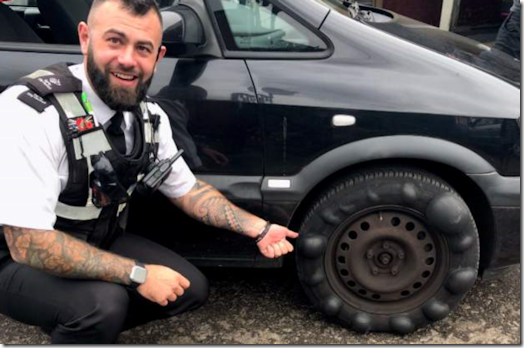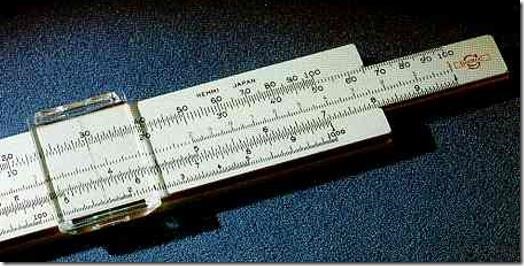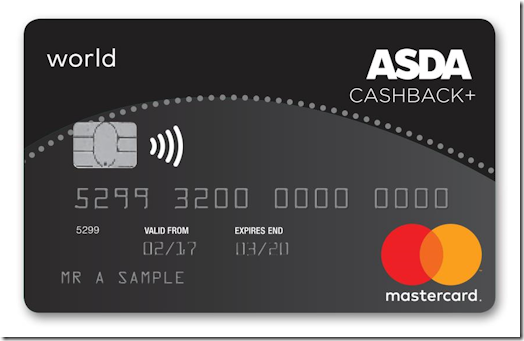 The system we have in the UK is that if you hold a full non-UK licence from a non-EU country, or a country which does not have a reciprocal arrangement with the UK, you can drive on that licence for up to 12 months.
The system we have in the UK is that if you hold a full non-UK licence from a non-EU country, or a country which does not have a reciprocal arrangement with the UK, you can drive on that licence for up to 12 months.
The clock starts ticking from the moment you set foot in the UK. It doesn’t stop if you go home again, and it doesn’t get reset at any time. Oh, and you can’t go back home, get a full licence, then come back and drive for a full 12 months on it. The clock is started as a result of your first entry into the UK – not the entry of your licence.
The purpose of this arrangement is to give you time to apply for a UK provisional licence, take driving lessons, and pass your test. Unfortunately, many see it as an excuse not to do anything for another 12 months – then get desperate.
Many years ago, while I was still a relatively fresh ADI, I had a new pupil who was from Pakistan. He had a job with a big pharmaceutical company based in the south of the UK. On his first lesson I asked to see his licence, and he handed me a pristine Pakistani one (green card). Alarm bells rang immediately, and asked him how long he’d been in the UK (two years). I then asked him when he had obtained this licence. He told me he went home earlier in the year (about three months previously) and got the licence then. I told him I didn’t think he could drive on it and – in his presence – called the main police station in Nottingham to seek clarification. As luck would have it, the guy who answered on that Saturday or Sunday afternoon was ex-traffic police, and he told me he thought I was right, but went to fetch the handbook to check for me. That was when I heard the full detail I have already given, above. In this learner’s case, he needed a UK provisional licence and didn’t have one, and the lesson obviously didn’t go ahead.
Some designated countries (and the whole of the EU) have those “reciprocal arrangements” I mentioned. The full list is here (and although it is dated 2013, it is still correct at the time of writing). People who hold full licences from those countries can exchange them for a full UK one without having to take a test. The exchange is like-for-like – an automatic licence from Australia would get exchanged for an automatic licence in the UK. And the original licence must have been obtained in one of the reciprocal countries – not one near by, or with a similar sounding name or geography (i.e. North Korea is not the same as South Korea, USA is not Canada, Hong Kong is not China (nor is Singapore), and so on).
Ignorance of these rules – real or pretend – is not going to get you anywhere if you get stopped by the police. I know for a fact that there’s a fair number of older non-UK drivers, who have been in the UK for quite some time, who still drive on their “international licence” by virtue of going to visit family in their home country once a year, thus believing they’re resetting the counter. They only get away with it because they haven’t been caught yet – and I know for a fact that there are some who have been caught, and who therefore can’t fall back on “pretend” ignorance any more, but who carry on driving nonetheless. Sorry, but it’s true.
As driving instructors, our only professional responsibility is to make sure the people we teach are licensed to take lessons with us. Anything beyond that is a personal matter, and climbing on to a soap box to bemoan the dangers of allowing foreigners to drive in the UK at all, without (or before) passing a test, has nothing to do with our day job. Don’t forget that we are foreigners when we travel outside the UK, and if you think we should bar anyone who hasn’t passed a test in the UK from driving here at all, then expect to have your (or your kids’) future plans for camping or skiing holidays seriously curtailed in return.
This has been the system used for many years across many countries. It doesn’t result in carnage, and apart from the usual mad rush to get a licence at the end of the 12 month window, it works reasonably well. For us as well as “them”.
They can go home and drive for another 12 months in the UK
NO THEY CAN’T!
I got this directly from the police when I had one once who had obtained his Pakistani licence when he went home for a few weeks earlier that year. I suspected when he showed it to me that there was something wrong, because he lived and worked in the UK, and had done so for the previous three years.
The police confirmed from their official manual that the clock starts ticking as soon as someone enters the UK, and does not get reset if they leave the country. In this guy’s case, the clock ran out over two years earlier and his 3-month old Pakistani licence was meaningless. He needed a UK Provisional and was classed as a learner.
I doubt that the system would check someone who had left the country for several years then re-applied to come back, so they might get away with it – but most non-UK nationals or dual-nationals won’t, because they are officially resident here. If they do it, they’re driving illegally – they’re uninsured, for a start.
Foreigners can fail a test and still drive. That’s wrong.
Look. It’s the system. How many current UK drivers would pass the test if they took it right now, without additional training? How many ADIs would?
It’s worth looking at the DVLA’s official position on this before spending the rest of your working life believing something else. I wrote to them and specifically asked what happens if a non-UK/non-EU full licence holder takes and fails a test within the 12 month window. Their response was:
A non GB licence holder can still drive for up to 12 months regardless of a UK test failure.
Is that clear enough? ADIs are always whinging about how one of their pupils was unfairly failed for things like not looking in their blind spot even though no one was nearby, or braking hard at a junction, but that they’re otherwise good drivers. Like it or not, the test is a series of hoops the candidate has to jump through, and if they miss one, they fail. The difference is that a learner has never driven unsupervised and has never been licensed to do so, whereas those holding licences from other countries usually have. There’s a big difference.
And don’t forget that when a UK driver visits another country, they expect to be able to get a hire car if they want one and visit all the tourist sites. A UK driver in Europe, the USA, or anywhere else is no different to a foreign driver in the UK. It’s the system.
If you’re teaching a foreign driver, just concentrate on your job and teach them. Get them through their test.
Trying to get them off the roads is a personal issue, not a professional one.
Foreigners may never have driven on the left
No. And foreigners in other countries – foreigners from the UK – may never have driven on the right. Yet many thousands do it every year. It’s the system.
The driving test isn’t specifically about driving on the left or right. It’s about being able to drive safely enough to get a licence. It’s all very well giving examples of the bad examples you may have experienced or heard of (or even imagined might happen), but a lot of non-UK drivers holding full licences are perfectly safe on the roads.
Of course, some aren’t. But as I suggested previously, some of our own learners fall into that category.
Professionally, we should concentrate on teaching our own learners. If you want to embark on a personal crusade, keep it separate.
I’ve seen people fail their test and drive away from the test centre
If they have a full licence from another country and are still within their 12 months, they are not breaking the Law. It’s the system. I repeat what the DVLA has told me:
A non GB licence holder can still drive for up to 12 months regardless of a UK test failure.
If they drive away on a Provisional licence unaccompanied then they are breaking the Law. It’s a totally separate situation, and one that isn’t confined to non-UK drivers.
Even EU drivers are unsafe
Look. Try to understand this. The people who come to you are not representative of the entire population of the universe. They are merely representative of the type of people who have issues with their driving. Crass, all-encompassing statements about EU (or any non-UK) drivers are just wrong. The ones who approach you obviously know they have issues, otherwise they wouldn’t have.
Foreigners have always driven here when they visit – certainly within your lifetime. The vast majority are exactly the same as a Briton driving abroad – and we’ve always done that.
There are some UK drivers – people who can trace their family tree back virtually to the Saxons – who are crap drivers. They’re probably less “foreign” than you are. It happens. And they’d be just as crap driving in France, Spain, the USA, or anywhere else. The same is true for some people who were born in other countries. Driving is a human skill, not a racial one.
The UK test is stricter than everyone else’s
You can’t have it both ways. First, it’s about driving on the left, now it’s about British superiority.
Britain doesn’t have the “hardest” test – not even within Europe.
In my own experience – and that of a lot of other ADIs if what I have read is correct – people from countries where obtaining a licence is easiest tend to realise they’re going to have problems and take lessons when they get here. Not all of them, of course, but a fair few.
I’ve had full licence holders from Pakistan, India, Sri Lanka, Peru, Chile, Colombia, Mexico, USA, Gambia, Nigeria, Kenya, Senegal, Zimbabwe, and some others I can’t recall right now come to me for lessons because they’re terrified of our roads.
If someone has a full licence from any country, and doesn’t give a damn about how they drive, they won’t come anywhere near you in the first place. So if they do, it’s either because they don’t have a licence, or because they know they need some guidance. And if they vanish once you explain how much work is involved… well, as I said previously, it’s a totally separate issue, and has nothing to do with allowing foreigners to drive for 12 months on their full national licences.
I never see them again when I tell them they won’t pass the test
You’d never see any learner again if you told them that. I was under the impression that ADIs were supposed to be positive when dealing with their customers.
Perhaps you should take a step back and consider that maybe your attitude to “foreigners” is clouding your judgement when you take them on.
When someone comes to me, and once I’ve assessed their driving, I explain to them what is required to pass the test, and that they’re not there yet (assuming that they aren’t, although many aren’t far off). I explain that there’s no chance of passing the test by luck unless you’re close to the required standard, so it is important to fix any specific problems. I stress to them that we’re going to do it in the shortest possible time, because driving lessons are expensive. I never tell people how long it will take, because I simply don’t know. If someone is no better than a beginner, they usually already know they’re not ready (and, usually, they do, no matter what you’ve convinced yourself of otherwise). One or two might believe differently – usually, the older drivers – but the majority don’t.
If someone insists on booking a test in spite of all that, I simply tell them that they can’t use my car. If they disappear as a result, I concentrate on my other pupils, because that’s my job.
If they pass, they’re not insured to drive away from the test centre
Neither are UK learners. That’s why I explain to any of mine – no matter where they come from or what colour their skin is – that if they go for their test in their own car (and a small number do), they need to phone their insurance company before they drive away just to be on the safe side. If they’ve spent all that money on learning to drive, they will listen. Any who don’t are not automatically “foreign”.
It’s their responsibility – not yours. And the problem is not confined to “foreigners”.
 Look at the photo, above.
Look at the photo, above. I nearly went a full year without a single puncture… until last night.
I nearly went a full year without a single puncture… until last night. The system we have in the UK is that if you hold a full non-UK licence from a non-EU country, or a country which does not have a reciprocal arrangement with the UK, you can drive on that licence for up to 12 months.
The system we have in the UK is that if you hold a full non-UK licence from a non-EU country, or a country which does not have a reciprocal arrangement with the UK, you can drive on that licence for up to 12 months. Until recently, there was a billboard in Nottingham at the junction between Porchester Road and Woodborough Road which carried the ad shown above.
Until recently, there was a billboard in Nottingham at the junction between Porchester Road and Woodborough Road which carried the ad shown above. Most people will remember the Edwin Curry saga back in 1988, where she claimed that most eggs were contaminated with Salmonella. It led to a dramatic fall in egg sales (60%), and it destroyed her political career.
Most people will remember the Edwin Curry saga back in 1988, where she claimed that most eggs were contaminated with Salmonella. It led to a dramatic fall in egg sales (60%), and it destroyed her political career.
 Please note figures were correct at the time of writing. Fuel prices are volatile, and all this was before Covid.
Please note figures were correct at the time of writing. Fuel prices are volatile, and all this was before Covid. There was a story in the
There was a story in the